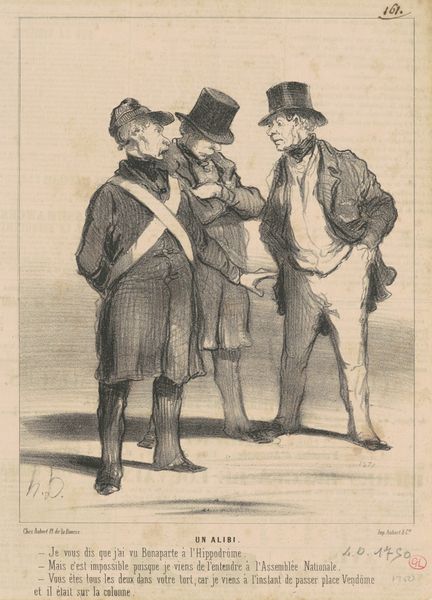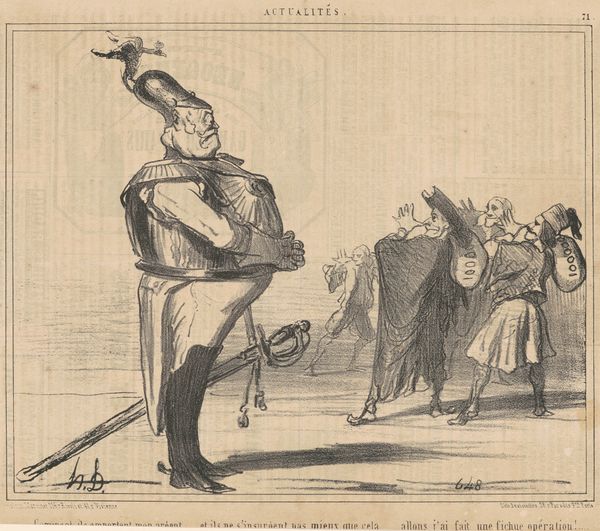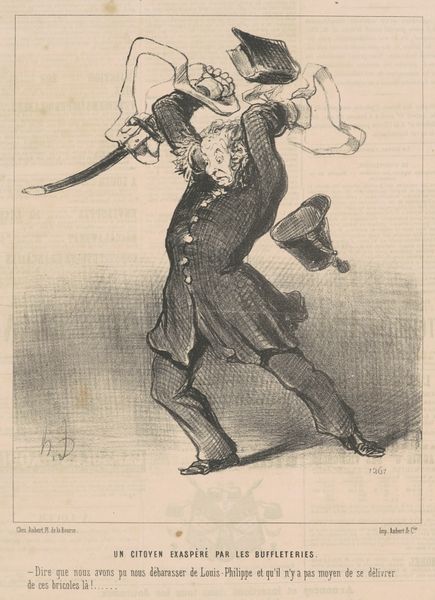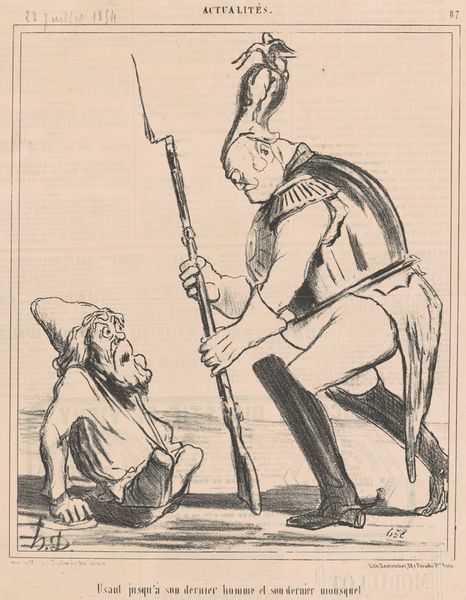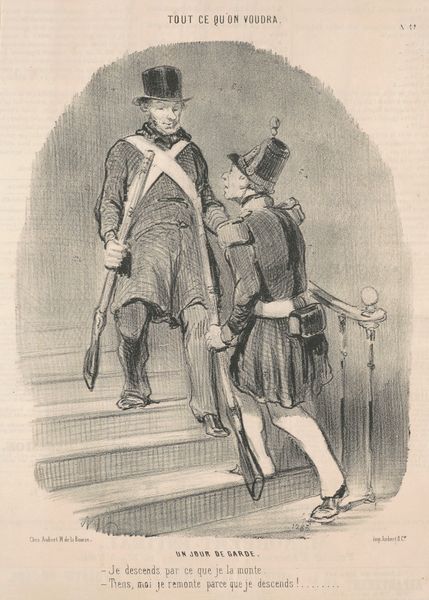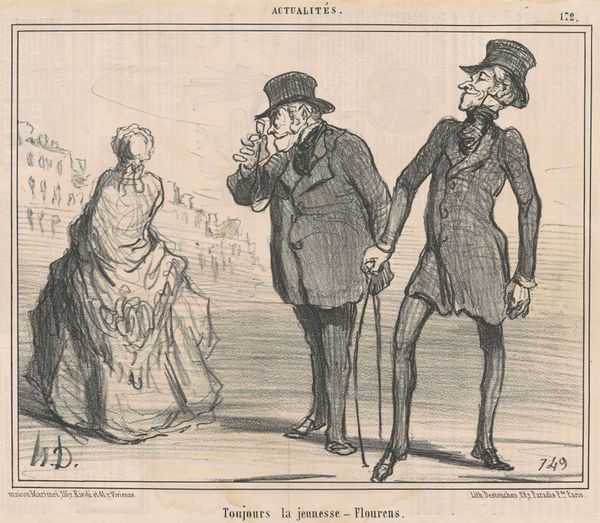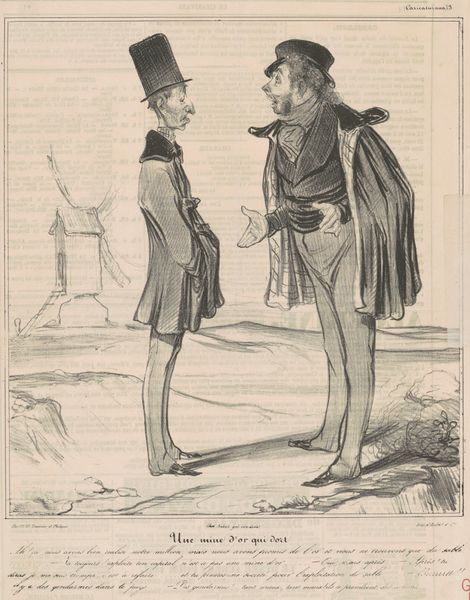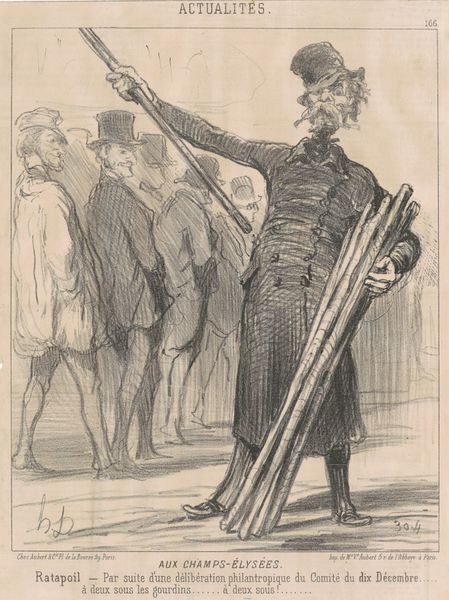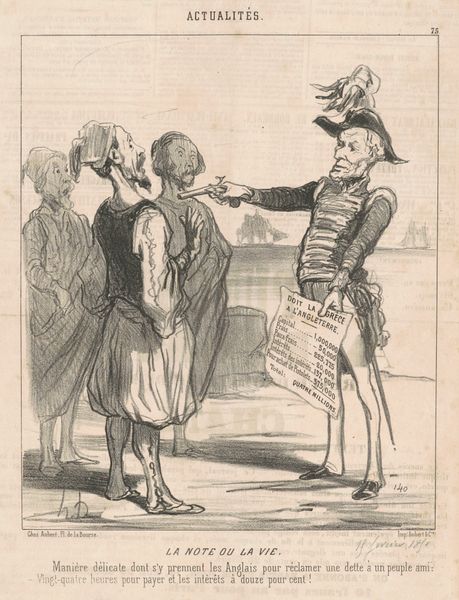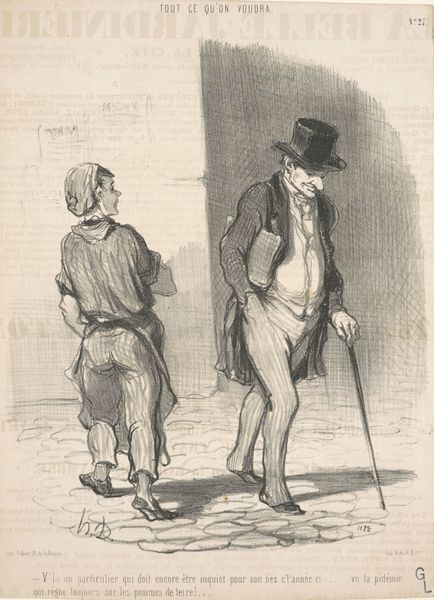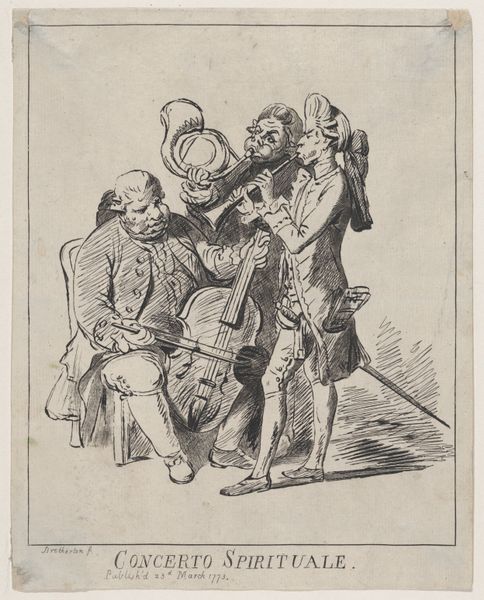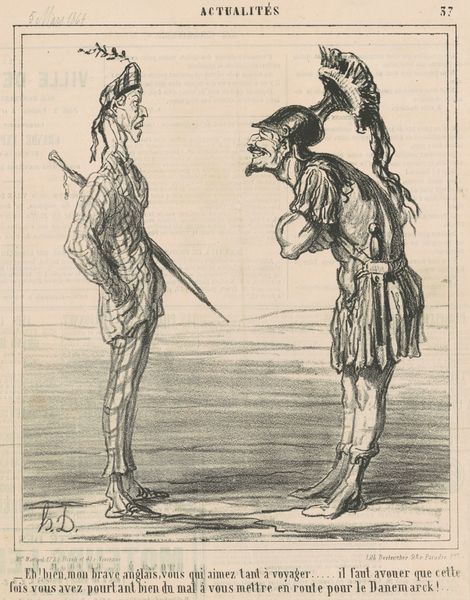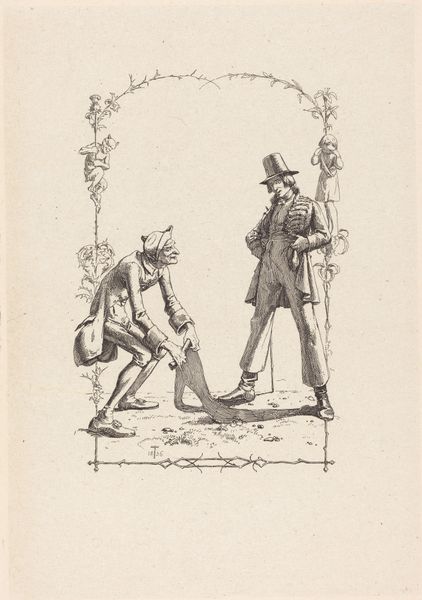
lithograph, print
#
narrative-art
#
lithograph
# print
#
caricature
#
figuration
Copyright: National Gallery of Art: CC0 1.0
Curator: This lithograph, “Le roi des grecs ...,” by Honoré Daumier, likely dates to the mid-19th century. Immediately, I'm struck by the overt power dynamics being portrayed. Editor: Yes, the visual language is heavy with implied threat. The Russian figure looms large, dominating the Greek king who looks… apprehensive, let’s say. There is a vulnerability to the king. The lithographic lines lend a harshness that amplifies that effect. Curator: Considering Daumier’s social commentary, especially focusing on the period’s political events, this print reads as a strong critique of Russian influence over Greece. Note the date "2 Mai 1854," suggesting the Crimean War era. Daumier often used caricature to express dissent and highlight inequalities, engaging with the day's most pressing topics. The text along the bottom, “Le Roides Grecs ayant la bonhomie de se laisser transformer en simple grenadier russe," emphasizes the condescension and coercion. Editor: The artist's use of symbolism here is pretty stark. The towering Russian Grenadier figure and the eagle on his helm serve as symbols of imperial dominance. Meanwhile, the crowned King of Greece is drawn nearly emaciated, seemingly surrendering his identity in exchange for the garb of a "simple grenadier," a foot soldier. Curator: Right, and considering the socio-political context of 19th-century Greece—newly independent but still grappling with its identity amidst the Great Powers' ambitions—the lithograph paints a bleak picture. Daumier gives voice to the historical tensions, making the artwork more than a satirical representation but a reflection on geopolitical pressures on a smaller, emerging nation. It critiques systems of power. Editor: Exactly. It's interesting how the diminutization and perceived emasculation of the King is juxtaposed with the almost comic grandiosity of the Russian soldier. It shows that visual languages don't lie; empires cast very long, unflattering shadows. Curator: I'm also moved by how it anticipates discourses about sovereignty. Who dictates what narratives are being imposed on certain nations? Whose power do they serve? It's heavy. Editor: It makes you consider how we still navigate cultural assimilation in this age. These enduring symbolic tropes. A stark work—powerful, I'd say.
Comments
No comments
Be the first to comment and join the conversation on the ultimate creative platform.
